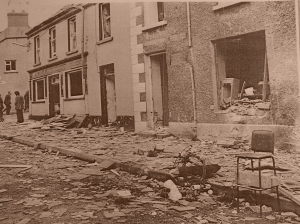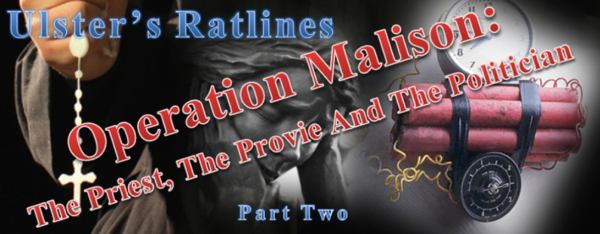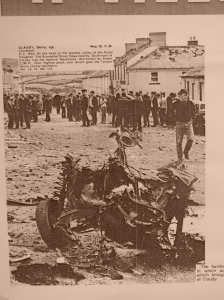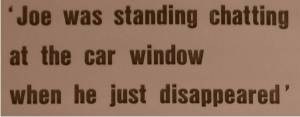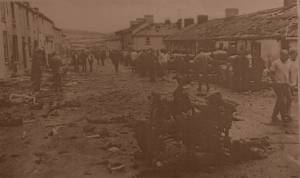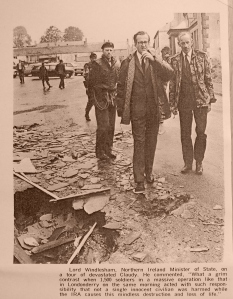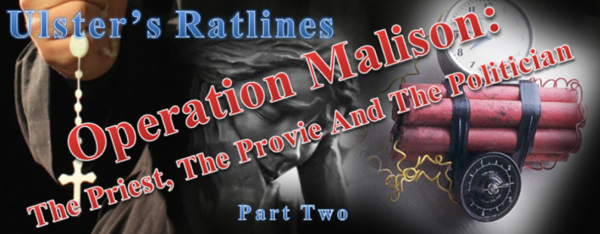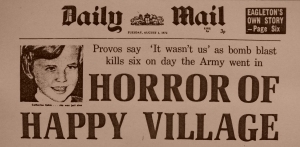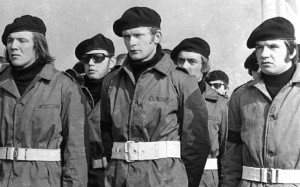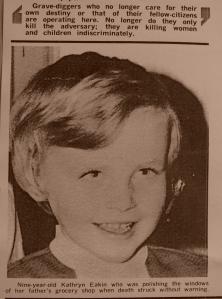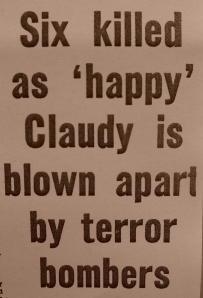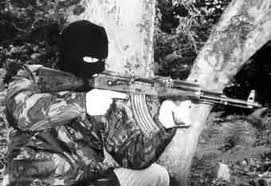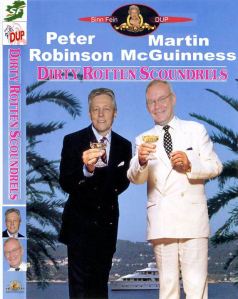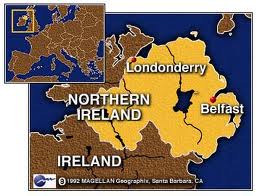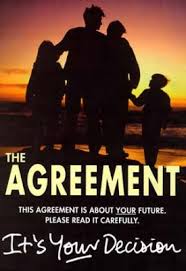
Ulster News’ North Ulster Editor and political analyst, David Nicholl, looks at the failings and corruption of the Northern Ireland Peace Process in a two part series. He concludes that the current political spectrum is one based on greed and sectarianism, that benefits the political and business elite, at the expense of the working class. Far from making Northern Ireland a fair society, the Good Friday Agreement made it a parody of nepotism and corruption.
Sold a Lie?
The Good Friday Agreement of 1998 was marketed to the Ulster people as the Panacea between war and peace. Designed in the hangover of a long, vicious and bitter conflict between Republicanism and the British, its advocates claimed it was the only alternative to a horrible war which had touched almost every family in the six counties and many beyond that.
The real and bitter suffering endured by so many as a result of that conflict – from actual loss of life and liberty, to the long list of other negative legacies which arise from a long terrorist war – made selling the GFA to the people much easier and in particular to the Unionist and nationalist community, in which there was little or no debate as to the long term political merits of the Agreement itself.
State directed Republican death squads, such as the PIRA and INLA, still hovered menacingly over the Unionist community in the years, during, which the GFA was designed. This spectre of random sectarian murder reminded the Protestant community that a heavy price could be extracted from them, should republicans continue to pursue a genociadal and murderous campaign in the name of Irish Nationalism.
In practice, the threat from these Irish Government sponsored killer gangs along with the continued presence of the British army and RUC provided a deadly coercive influence which made acceptance of the GFA vitally important to the average Unionist and Nationalist voter in 1998.
When packaged as a ‘vote for peace’ there was little doubt that the nationalist and Unionist population would tick the box marked ‘Yes’, and following strong lobbying from both Sinn Fein and the SDLP, Ulster Unionists, British Government and others, this is precisely what happened.
This same dynamic existed at the time of the Anglo Irish treaty in 1922, when Britain evoked the threat of ‘immediate and terrible war’ in a bid to coerce the people into voting in a way they saw fit.
There was no option for Unionists but to work within a framework that promised Irish unity, and if there had been it would hardly have mattered as the outcome of the northern vote [pre- Determined as it was by set to achieve in the long term Irish Unification itself] This was held supreme, regardless of what the rest of the Ulster wished for.
In this way, the Good Friday Referenda were in reality a continuation of the old Unification dynamics of the early 1920s, made possible by the same gerrymandered voting arrangements and the same threat of Irish Republican violence, as had been practiced many decades earlier. Irish history had merely came full circle and found itself back at square one, bar a series of reformist and cosmetic gestures designed to smooth the transition of the IRA into a constitutional movement, entirely absorbed into pro Sinn Fein structures.
Blackmail Gone Mad
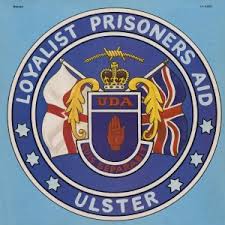
Given that the [once revolutionary] Provisional leadership had by this stage, committed itself to constitutional politics alone, there was little to be gained by Unionists from criticising the internal workings of the Agreement itself.
Furthermore, the failure of Loyalist/Unionist negotiators to provide basic safeguards for former combatants and prisoners in the GFA raises questions as to just how far they were willing to turn their backs on activists amongst their own ranks, (not to mention future political prisoners) in the pursuit of political ambition.
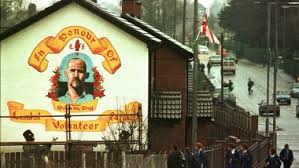
Good Friday even provided for the imprisonment of its own supporters, as was later seen in the case of LVF representative Billy Wright, who upon voicing disapproval at his former party’s support for the agreement found himself arrested and imprisoned for actions he undertook decades earlier in a time of war.
Many other former Loyalist prisoners have had their release licences revoked in response to voicing or acting in a fashion critical of the Good Friday Agreement, (Michael Stone) and in effect hundreds of former POWs are today being held as hostages of their own conscience as a result, fearful of being returned to Jail should they resume Loyalist politics.
If Loyalism could get things so wrong on the welfare of Loyalist prisoners, then the question must be asked, did they get it wrong on the constitutional issue also?
The virtual interment of its political opponents today along with the coercion of the wider Unionist population in 1998 shows just shows how counterproductive the GFA really was for Unionism.
However, it is its many other aspects and dynamics which also show utterly, how the Good Friday Agreement could be used as a vehicle to deliver republican aspirations, and which explain why true Unionism , and Loyalism can have no truck with it.
Inherently Sectarian and Pro Republican
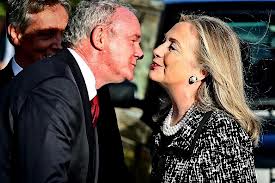 Despite being marketed as the key to ‘ending Sectarian conflict in Ireland’, the GFA is in fact a sectarian settlement, with sectarian values at its heart and a guaranteed sectarian outcome if it remains the only vision for political progress in Ireland.
Despite being marketed as the key to ‘ending Sectarian conflict in Ireland’, the GFA is in fact a sectarian settlement, with sectarian values at its heart and a guaranteed sectarian outcome if it remains the only vision for political progress in Ireland.
From its internal clauses regarding ‘Parity of esteem’ to the constitutional out workings and daily running of its Stormont executive, the entire world view of the GFA presumes and supports a view of Irish society in which Sectarian divisions are inevitable and even natural.
Unionism, as followers of Carson and Craig, reject this ‘two communities’ “Shared Future Vision”, which the GFA enshrines as the cultural and social model around which we should base our future. We reject the notion that historical discrimination practiced upon the Catholics of the Northern Ireland, can or should be crudely addressed by simply pointing to the lot of the protestant working class and demanding the same for ‘our side’, as is proposed by supporters of the GFA. Discrimination is wrong whatever community you are from.
This eschewed view of equality creates only mistrust and deliberately lowers working class aspirations; it is exploited by the rich who take comfort in working class division and postpones the day when protestant & catholic workers unite in a true common struggle.
That is in the interests of the working class struggle to secure for the people of Northern Ireland the ownership of Ulster and all its resources to be used for the “common good”. In this sense we are truly anti-sectarian, we don’t seek equality ‘between two communities’, we seek to destroy sectarian distinctions altogether in the course of struggle to achieve a New Northern Ireland. This places us apart from the pro- GFA parties, whose values accept sectarian division and see them as inevitable, regardless of what they claim to profess.
We seek to create a “united people”, united not within a national or communal identity but in common purpose for progressive human gain. Stormont and its politicians, as well as the Capitalist Business Elite here, recognise the benefits of maintaining sectarian divisions within our communities. And when we consider the potent results of this real example of class unity, then we can fully understand why the ‘powers that be’ have little interest in allowing true unity happen today; why they allow sectarianism to continue, in the form of the Good Friday Agreement.
Politicians understand that it is much easier to implement Anti-Working class cuts, such as the ‘Welfare Reform Bill’ or merely to deny workers basic rights and conditions, if the working class base sees itself as divided into two hostile factions incapable of uniting in common cause. This dividing factor was used by the Orange and Green Politicians for hundreds of years here, and its negative influence continues today via the workings of the GFA.
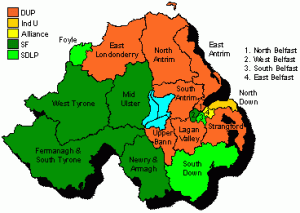
A Vehicle for Irish Unity?
The Good Friday Agreement allowed for nationalists to express aspirational preferences towards nationalist goals in a way that Britain had virtually criminalised in previous decades. However, it is in effect a series of stage managed concession and of use to revolutionary republican intentions to unify Ireland.
Stereotyped and cosmetic gestures, tolerable to Britain (once the IRA campaign was over) were given government approval. Official recognition of the Irish language and the reduced usage of unionist trappings within government bodies, Policing and the courts were presented to the nationalist people as symbols of the processed steps towards Irish Unification and British Abandonment of the Union.
Clauses celebrated by Nationalist politicians as mechanisms to be used in the pursuit of unity were outlined in the ‘Strand 3’ section of the Good Friday Agreement. ‘Strand 3’ reveals a Republican Veto (aka, the Principle of consent), whereby the wishes of the guaranteed Unionist majority within the six counties is now obsolete.
Strand 3 mechanisms amount to an allowance for the northern population to campaign for the ‘triggering’ of a border poll, which itself could be authorised by the Secretary of State, if he/she believed there was a reasonable chance of a majority ‘yes’ vote within the six counties.
This mechanism could, we were told, be worked towards while also attempting to maximise the influence of cross border governmental bodies (i.e. the North/South ministerial council) and cross border trading and economic initiatives, to effectively make the border disappear. Again, the value of such a political dynamic is alien to Unionism, not only, because it accepts that Republicans have a right to set the conditions for Irish independence, but because it presumes that eventual moves towards independence can be achieved from a ‘greening of the north’, (that is the promotion of nationalist/Irish electoral identity within the six county area) whilst immersing the Unionist community in capitalist economics, albeit on an all-Ireland level.
We believe, that not only are strategies to secure such constitutional solutions in the Northern Ireland unrealistic (all polls refute their likelihood in this generation), their widespread promotion would, if taken seriously, spark off sectarian resentment and communal withdrawal, which would place Unionist politics in jeopardy to the point where apparent nationalist tactics would actually deliver republican goals.
Greedy Politicians and Corporate Exploitation of the GFA
Multi -national corporations and worldwide business investors took great interest in the Irish “peace process”. Post GFA Northern Ireland, to them, was marketed as a place where people would work for very little and where tax breaks would be available to billionaire business owners, in return for setting up shop here. Indeed both the global and Irish financial elites promoted the GFA in order to generate future profits.
The deeply pro- business action group ‘The Portland Trust’ proudly cite how…
“Leading business organisations and businessmen formed the Group of Seven (Irish G7), in 1996 to argue the economic merits of peace. Without ever explicitly calling for a ‘Yes’ vote in the referendum that ratified the Agreement, the G7 ensured, through conspicuous public advocacy, that voters understood the Agreement would be good for business.”
Ten years on from the GFA, direct investment from the US increased and has come to account for 10% of the jobs in the six counties. However the investor’s motives were far from pure. Again the Portland Trust confirms:
“To take one example, in January 2005 Citigroup chose to locate one its IT centres in Belfast, promising an investment of $100 million over five years and 375 new jobs. Citigroup was drawn to Northern Ireland by a workforce that, while possessing world-class technical skills, earns wages some 30% lower that its counterparts in England or the Republic of Ireland. Invest Northern Ireland (formerly the Industrial Development Board or IDB), the governmental agency that promotes inward Investment, provided $12.6 million to support the project.”
Many multi-national firms took advantage of these incentives, and throughout the years of the ill-fated ‘Celtic tiger’, the arrival of a plethora of factories, industrial estates, jobs and the subsequent appearance of wealth was held up as evidence of the success of the Good Friday Agreement. In reality, the firms involved in setting up here post GFA, were here only to make a quick profit and please their shareholders, not to help ease the suffering of the people of Northern Ireland.
Indeed when the inevitable world-wide recession hit, these companies (many having maxed out their tax breaks), packed up and left as quickly as they had arrived, leaving the Ulster worker with nothing but a hangover from an ‘economic miracle’ which was in fact no more than a temporary illusion. Post-recession colossal job losses in the Northern Ireland including a massive four day 2% wipe out of the manufacturing sector, have in a very brutal fashion demonstrated to the population how for more than a decade they had been duped into believing that the post Good Friday era would be one of endless financial opportunity and prosperity.
The Roots of the Political Corruption and Greed.
Of course what we were seeing was politically motivated investment; business development grants, tax relief and subsidies, these were the elements which really provided for the changing city skylines. The apartments, office blocks, call centres, and an army of cranes had little to do with a naturally growing, healthy indigenous economy, it was the result of a political settlement which saw the population of Northern Ireland being groomed into a pool of cheap labour, and in an environment free from Political resistance.
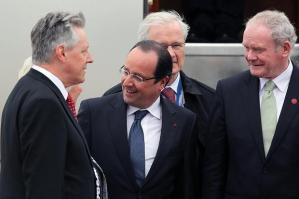
This was the ultimate goal of the Good Friday Agreement. A plan affirmed only recently by the G7 Fermanagh get together and the recent investment conference aimed at selling the lie all over again to the electorate.
The failure of the media to expose this, and indeed, their willingness to peddle the spin can been seen in their coverage of the constant trade missions undertaken by Stormont’s political elite. While these tireless trade hunters, cruse the globe, in first class and stay in the most expensive hotels, there will be no trade benefits. The reason for this is quite simple, the countries that they are most fond of cannot enter into a trade deal with Northern Ireland, they are outside the EU. The success of them can be gauged by the main focus of their last trade mission to China: the export of pig’s trotters.









